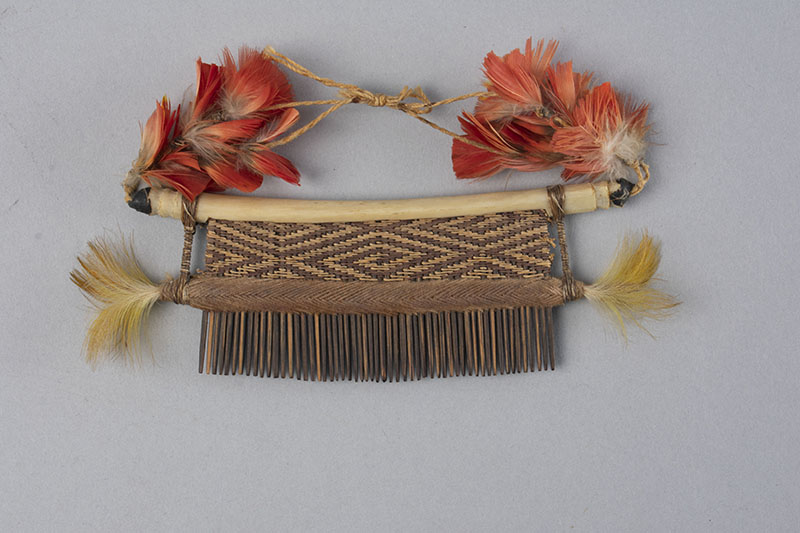Maxwell Museum Blog

92.28.1 Comb (wayamakasu), Waiwai, Roraima Region, ca. 1950s
The comb was collected in the 1950s from the Indigenous nation of the Waiwai of Northern Brazil.
The Waiwai wayamakasu (12 x 7 cm) has a top crossbar of monkey bone and lower bar of bamboo which is wrapped with woven threads, teeth made from palm wood, colorful feather clusters, a woven mid-section, and a handle for carrying. Waiwai combs are made for women by men and their colors and materials signify the interrelationship of opposite genders in Waiwai society[1]. In this comb, the purple-dyed cotton is associated with women and the blonde buriti fibers are associated with men.[2]
The Waiwai live in disperse territories comprising nearly 21,000 sq[3]. miles in Northern Brazil and Southern Guyana. Their population is estimated to be around 2,800 members.[4]
Information about the WAIWAI: https://pib.socioambiental.org/en/Povo:Waiwai
Maps and information of indigenous territories: https://terrasindigenas.org.br/en
Educational resources for Children: https://mirim.org/en
Online Book- The Gift of Birds (information about feather work and WAIWAI COMBS): https://tinyurl.com/ssbtdd4
The comb will be featured in the upcoming exhibition, Heartbreak: A Love Letter to the Lost National Museum of Brazil. Post by Moira Garcia.

